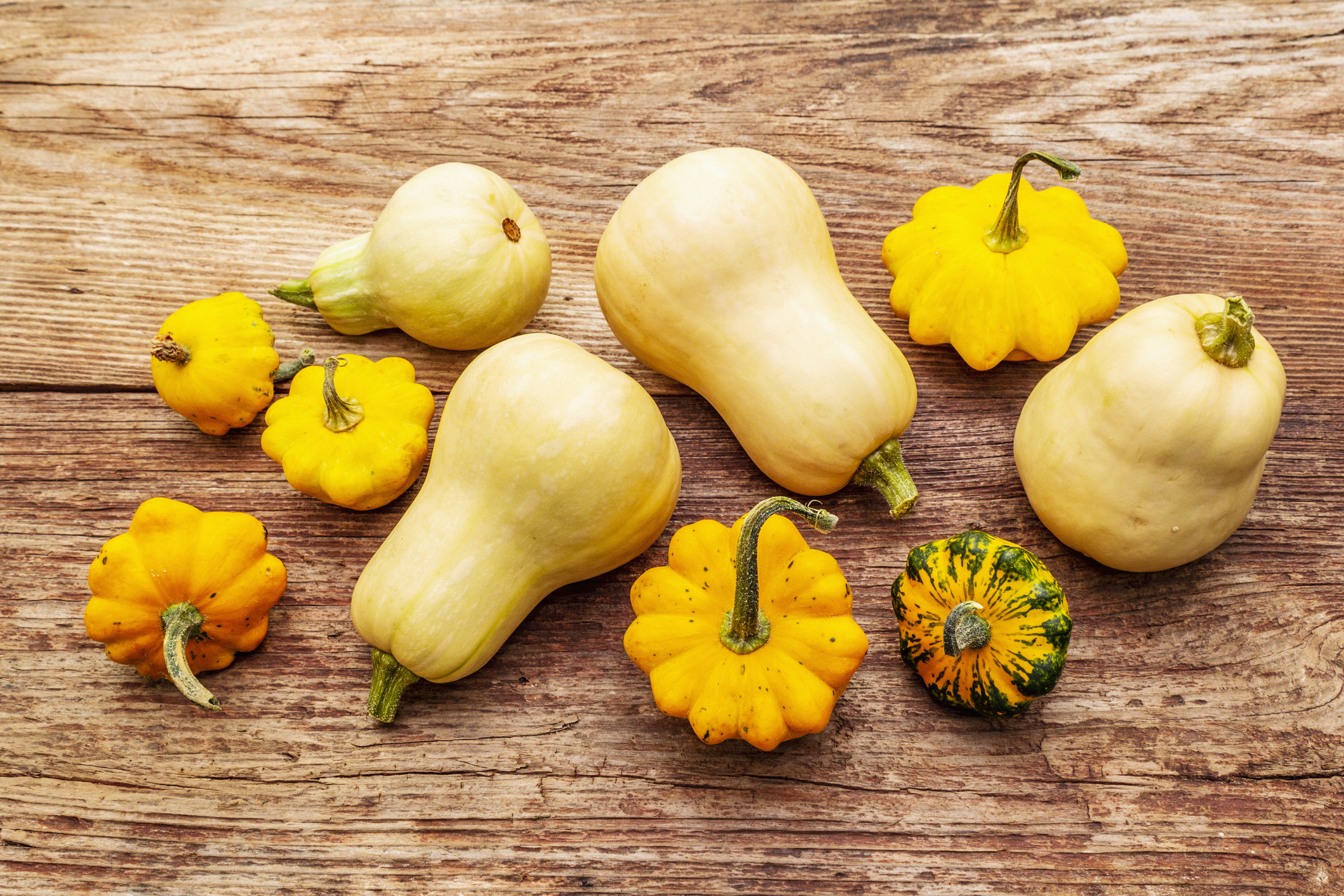Get Easy Health Digest™ in your inbox and don’t miss a thing when you subscribe today. Plus, get the free bonus report, Mother Nature’s Tips, Tricks and Remedies for Cholesterol, Blood Pressure & Blood Sugar as my way of saying welcome to the community!
Winter squash: Time to eat this ‘Blue Zone’ food now

It’s fall here in the Northeast, and everything is looking orange — leaves on the maples, pumpkins on neighbors’ porches …
Good time of year to discover an orange superfood you may have overlooked.
It’s been granting long life for years to people around the world, including Japan, Greece and Costa Rica — areas known as Blue Zones, because the populations are long-lived and healthy.
And it’s readily available and plentiful right now in your local produce section.
Here’s the skinny on why this superfood is so super, and a handful of ideas for how to enjoy it right now.
Squash 101
One reason the squash family has so much health potential is the high concentration of carotenoids, which depending on variety, includes lutein, zeaxanthin, alpha-carotene and beta-carotene.
Carotenoids can triple your health benefits, especially for…
- Eye health. Carotenoids can help protect your eyes against one of the leading causes of blindness, Age-Related Macular Degeneration (AMD). Lutein and zeaxanthin absorb a substantial amount of blue light that causes macular damage. And the antioxidant properties of these carotenoids also shield the eyes from the oxidative effects after blue light exposure has already occurred.
- Osteoporosis. When researchers examined 457 postmenopausal women, those with the highest levels of the carotenoid beta-cryptoxanthin in their blood had a 93 percent lower risk of osteoporosis.
- Heart health. Carotenoids have the unique ability to become soluble in both fat and water, which means they can circulate in lipids, cholesterol and fats in your body. This means carotenoids have the unique ability to directly influence arteries, decreasing thickness and stiffening that may lead to the development of atherosclerosis, one of the most common types of heart disease.
Researchers found a “nine-fold increase in total carotenoids provided within orange-red and yellow-orange colored cultigens versus yellow-colored cultigens.”
Most squash varieties also contain healthy amounts of vitamins C and A and plenty of fiber. So, it’s easy to see the connection between squash and the health and longevity enjoyed in Blue Zones.
If you want to make them a regular part of your diet, here are a few varieties of winter squash to include:
- Acorn squash
- Butternut squash
- Buttercup squash (also called turban squash, for its shape)
- Kabocha, or Japanese pumpkin
- Honeynut squash (a miniature butternut squash)
- Spaghetti squash (yellow inside)
- Pumpkin (yes, pumpkin is a squash!)
4 popular fall squashes and how to prepare them
Kabocha squash. Also called a Japanese pumpkin, this fruit is a popular part of the Okinawan diet, which concentrates on colorful produce that’s full of carotenoids ( a serving of just 2/3 cup of this fruit has almost 1800mcg of beta carotene.
An easy way to prepare kabocha squash is to wash the outside with plain water (no soap), then cut the squash in half. Place the squash cut sides down and bake for about 30 minutes at 400 degrees F, or until the flesh is soft enough to pierce with a fork, and serve with a little butter or olive oil.
Acorn squash. Acorn squash is an excellent source of fiber, with 9gr per cup. While it can be eaten raw, most people prefer roasting it.
Cut the squash in half lengthwise and remove the seeds. Place the halves on a pan, cut side up, and roast at high heat (400˚F) until the flesh is soft, about 45 minutes. Roasted acorn squash can be cut into chunks, pureed in soups, or even baked into desserts like pie or custard.
Butternut squash. Butternut squash is an excellent source of vitamin A, fiber, and vitamin C.
To pick a good butternut squash, look for a creamy, pear-shaped squash that feels heavy for its size. It should have thick skin. Avoid butternut squash with blemishes or soft spots.
Spaghetti squash. This is a fun one for kids. It gets its name from its stringy flesh, which resembles spaghetti and is often used as a healthy pasta replacement.
If you’re trying to find a substitute for spaghetti, this fruit can do the job. To get those spaghetti-like strands, though, you’ll first have to steam or bake it.
Be super careful when cutting your spaghetti squash lengthwise. Its skin is pretty tough. Use a thick towel to protect your hands in case your knife slips.
Here are a few recipes to try:
Simple But Elegant Curried Kabocha Squash Soup
Autumn Roasted Butternut Squash
Roasted Brussels sprouts and acorn squash with pecans
Editor’s note: Are you feeling unusually tired? You may think this is normal aging, but the problem could be your master hormone. When it’s not working, your risk of age-related diseases skyrockets. To reset what many call “the trigger for all disease” and live better, longer, click here to discover The Insulin Factor: How to Repair Your Body’s Master Controller and Conquer Chronic Disease!
Sources:
This Delicious Superfood is a Blue Zones Longevity Staple — Blue Zones
23 Types of Squash — jessicagavin.com
Powerful Pumpkins, Super Squash — Science Daily














